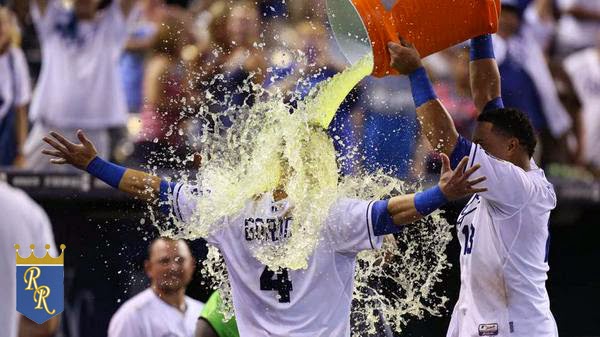The Royals offense obviously has been disappointing yet again in 2014. Most of us would make the case that this is mainly because of the Royals inability to drive the baseball. We'd all likely also admit that this team does a pretty good job of making contact, albeit very weak contact.
Given the amount of contact that the Royals make, it is likely that the success of this offense will fluctuate more than that of offenses that rely on walks and the long ball. This is simply because as a statistic batting average on balls in play can fluctuate a great deal. This thought process has led us in the past to make excuses for the offense and specifically individual players.
This season for instance the Royals offense currently ranks 18th in baseball in batting average on balls in play. How much difference would our opinion of the offense be, if for instance, instead of posting a .293 BABIP, they were above the .300 mark? Specifically, we might look at individual players and point out guys who are likely to improve.
Sure, Moustakas has been bad, but damn the luck his BABIP is just .132!
Unfortunately, what we must remember is that there also exist methods to calculate expected BABIP. These methods can vary, but Jeff Zimmerman has found good reason to believe that Hard Hit% plays a crucial role in the xBABIP formula. Either way, the days of assuming that players should fall in around the .300 mark in batting average on balls in play are behind. It is clear that players have an enormous say in how the many of their balls are converted into outs.
Here's a look at the Royals current hitters. The first number is their current BABIP and the second number is their xBABIP supplied by Zimmerman. (You can view the numbers for yourself here.)
- Nori Aoki: .337/.266
- Omar Infante: .286/.305
- Eric Hosmer: .344/.263
- Billy Butler: .275/.262
- Alex Gordon: .306/.240
- Salvador Perez: .269/.265
- Mike Moustakas: .132/.239
- Lorenzo Cain: .412/.238
- Alcides Escobar: .343/.273
- Jarrod Dyson: .429/.240
- Justin Maxwell: .364/.252
- Brett Hayes: .000/.158
- Danny Valencia: .300/.275
As you see, the Royals have actually been quite fortunate when it comes to their batting average on balls in play. On average, each starting Royals is overachieving by about 39 points. This would indicate that instead of being near the middle of the pack in BABIP, the Royals should actually be ranking near the bottom of the league.
For Royals fans this is a scary notion. Is it really possible that an offense averaging 3.9 runs per game has actually outperformed itself? It's a tall order, but let's hope the Royals realize that being a good hitter isn't just about putting the ball in play.
Follow me on Twitter @Landon_Adams!
Follow me on Twitter @Landon_Adams!

